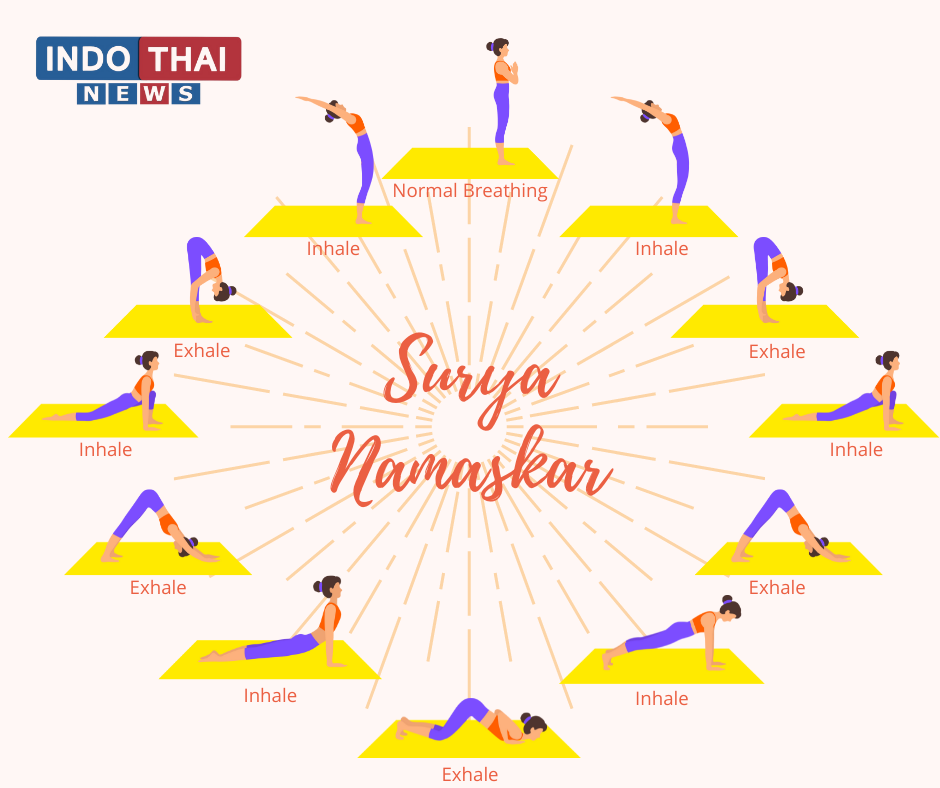The Project
In celebration of 75 years of Independence, the Ministry of Ayush in cooperation with the National Yogasana Sports Federation and ICCR launches the 75 crores Surya Namaskar project – a 21-day celebration of good health and unity.
The project encourages everyone across the globe to perform a series of Surya Namaskars beginning on January 1, 2022, and culminating on February 7, 2022. All are welcome to register through the website and receive their Certificate of Participation upon completing the program. Surya Namaskar or also known as Sun Salutations – a series of 12 yoga poses that is best performed early in the morning to encourage a healthy body and a calm mind.
Yoga
Yoga has recently gained a huge international following in the past decade as more enthusiasts learn and teach yoga across the world. The practice has existed for thousands of years combining poses, breathing exercises, and meditation. Many have discovered its physical and mental benefits and how anyone could learn and practice these exercises.
Surya Namaskar
Never tried yoga before? Let’s get you started with a step-by-step guide into the poses for performing Surya Namaskar or Sun Salutations.
1. Pranamasana or the prayer pose. Stand up straight with your feet firmly on the floor. Balance your weight evenly with your elbows hanging at your sides with your palms facing forward. Breath steadily and calmly focusing on finding your center.
2. Hasta Uttanasana or the upward salute. Begin with inhaling deeply as you look upward. Followed by slowly raising your arms above your head as you keep your palms together. Enter a slight backbend by moving your hips forward.
3. Hasta Padasana or the standing forward bend. As you exhale and keep your legs and back straight, try to bring your chest closer to your thighs with the crown of your head aimed at the floor. Try to line your fingertips with your toes.
4. Ashwa Sanchalanasana or the lunge pose. First, Inhale as you bring your right knee towards your chest, and second, stretch your left leg backward. Try to balance your body as you raise your head forward.
5. Adho Mukha Svanasana or the downward-facing dog pose. Step one is to plant your palms firmly on the ground. Second, create an inverted “v” by pushing your hips backward as your palms and feet remain on the ground.
6. Chaturanga Dandasana or the plank pose. Exhale and keep your body parallel to the ground by extending your right leg next to your left leg. As your palms stay firmly on the ground, balance your body as you try to form a straight line and try to breathe steadily.
7. Ashtanga Namaskar or the eight-limbed pose. Exhale and bring your knees to the floor as your raise your hips slightly from the ground. Keep your chin rested on the floor. Breathe and hold the position keeping your chin, palms, chest, knees, and feet touching the floor.
8. Bhujangasana or the cobra pose. Slide forward and as your legs and abdomen rest on the ground, use your palms to slowly push your upper body upward. It resembles a cobra raising its hood.

Towards the end, work your way backward by returning first to Adho Mukha Svanasana, the second is to take the Ashwa Sanchalanasana pose. The third is to use the Hasta Padasana. Lastly is to proceed to Hasta Uttanasana. You should now be back to the original prayer position. Successfully practice and complete these steps to help strengthen your body and mind.



